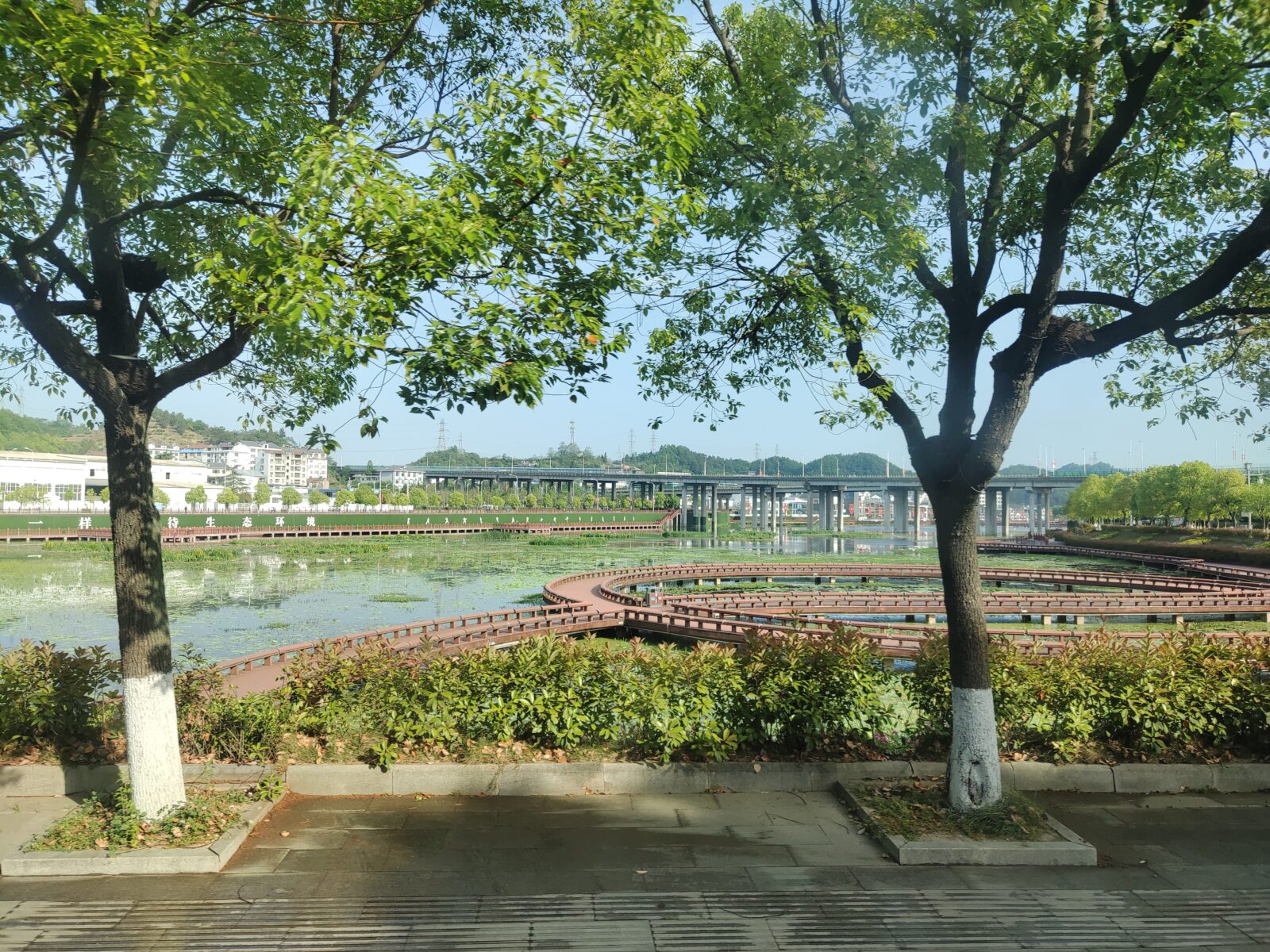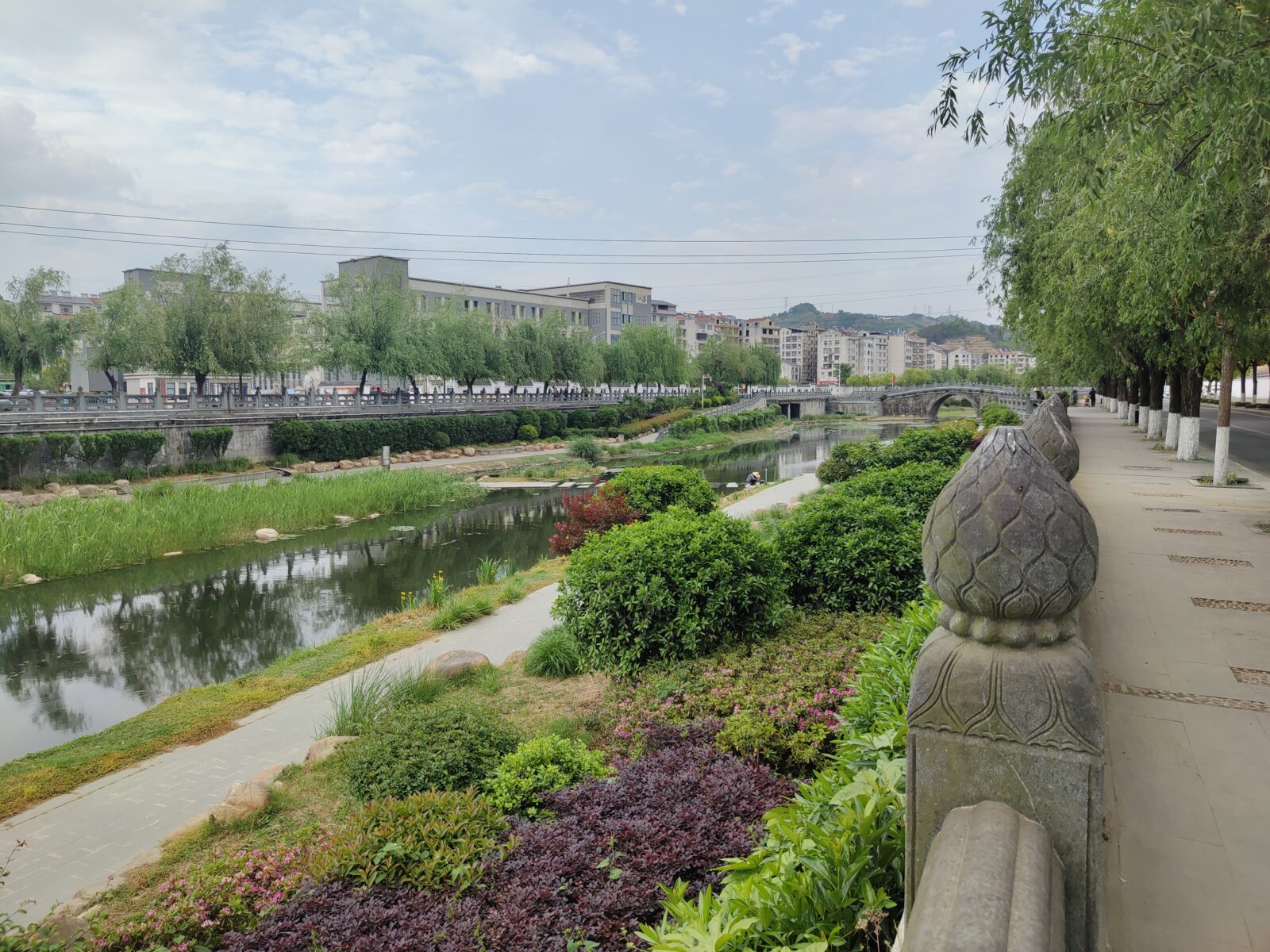Sponge cities are much more than a strategy for adapting to flood risk. They allow us to look at the urban landscape beyond its current surface appearance, to understand it through the natural territory on which it stands, and to redesign it in line with the ecological characteristics and context that sustain it.
A few months ago, I had the opportunity to travel to China, specifically to Hubei province. Although my main destination was the mountainous landscapes of Wudang—the cradle of Taoism and internal martial arts—I was also able to explore the vast urban and peri-urban scale of its capital: Wuhan.
Known as the “city of a hundred lakes,” Wuhan is a river megalopolis crossed by one of the world’s largest and most powerful rivers: the Yangtze. The city earned its nickname from the more than 120 lakes it once contained. However, in the 1980s, an accelerated process of landfilling and artificialization drastically reduced that number to just over thirty.
After decades of struggling against water—with frequent floods, especially during the monsoon season, and enormous human and material costs—Wuhan’s urban planning policies shifted dramatically. Over the past decade, the city has become one of the leading references for the “sponge city” model, both in China and internationally. Wuhan emerged as a pioneer of this approach, and China itself as the global vanguard.

The idea of the sponge city arose as a response to the challenges of urban climate change. As extreme events such as torrential rains, floods, and heatwaves intensify, many cities are suffering the consequences of decades of impermeable planning: sealed soils, overwhelmed sewage networks, and the loss of river ecosystems.
In 2015, China launched an ambitious national program to transform dozens of cities into urban sponges capable of absorbing, retaining, and reusing rainwater as part of their metabolism. These cities not only mitigate floods but also improve air quality, foster biodiversity, and enhance quality of life.
The approach combines green and blue infrastructures: floodable parks, rain gardens, green roofs, permeable pavements, natural channels, and artificial lagoons. More than just engineering, it represents a new urban sensitivity: to stop fighting water, and to begin living with it.
Wuhan’s case is so striking that even from the train window, with just a curious glance, I could perceive an urbanism deeply rooted in water. Not only in its functional aspects, but also in its symbolic, aesthetic, and social dimensions. And although Wuhan stands out in particular, my journey showed me how the relationship between city, territory, and water is intensified throughout the province and in the daily life of its inhabitants.
What is most impressive, beyond the scale and investment, is the everyday integration of water into urban life: elevated riverside walks, floodable pathways, vast parks capable of storing millions of cubic meters of water, and sports, agricultural, and commercial areas along the riverbanks—all linked by a network of channels that manage water as a common good. I was struck by aquatic farmland, orchards crossed by canals, people fishing alongside others working the land, kilometer-long river meanders, water bodies interwoven with vertical urbanism and lush vegetation—all tied together by modern transport and communication infrastructure.
In Wudangshan, a small mountain town, the experience was more subtle but no less revealing. Nestled among sacred mountains, its urban core combines traditional rainwater harvesting systems with artificial lagoons, terraced gardens, and urban design that adapts to the terrain rather than imposing on it. Here, water has a spiritual, ecological, and practical role: it refreshes, connects, and sustains. There are walkways across rivers, pedestrian paths through ancient channels, and public spaces where direct contact with blue infrastructure forms part of daily life.



In the more rural parts of the province, rivers still flow freely, without channelization. Villages integrate into the landscape while respecting floodplains, which are left untouched or used temporarily for grazing or rice cultivation, without putting people or infrastructure at risk.
Ultimately, water is not a threat to be controlled nor a resource to be buried under asphalt. It is part of the urban landscape: integrated into parks, promenades, infrastructure, and daily experiences. Riverbanks are not fenced off or abandoned—they are walked, inhabited, and celebrated. This fluid coexistence between city and river—so different from what we see in Euskadi or in many European cities—embodies the powerful idea of sponge cities.
Bringing this experience back home, I cannot help but think of Bilbao. Both the city and its neighboring municipalities have developed an unbroken urban fabric along an estuary. In many ways, despite the differences, the Bilbao metropolitan area is also a city of water. The Nervión-Ibaizabal has borne witness to its industrial history, its decline, and its regeneration. Yet we still turn our backs to it. The river is seen as a barrier or a backdrop, not as a living, integrative space.
If we were to apply the sponge city approach to our own context, we might imagine:
- Greener, more accessible riverside promenades, even on today’s underused industrial banks.
- Controlled flood zones in urban parks such as Bolueta, Elorrieta, Zorrotzaurre, or Punta Zorroza.
- Streets and squares with permeable pavements and vegetation adapted to heavy rain.
- A metropolitan blue-green infrastructure connecting the river with its tributaries and the neighborhoods along the estuary.
Such a shift in perspective could guide not only Bilbao but the entire Nervión Valley upstream, where towns like Etxebarri, Basauri, and Arrigorriaga could jointly plan for water resilience by restoring meanders, connecting watersheds, and incorporating nature-based solutions across the territory. Downstream, municipalities on both banks—Erandio, Barakaldo, Leioa, Sestao—could reclaim marshes and floodplains, integrating them into the urban and ecological landscape of the estuary.
What I saw in China was not only urban engineering. It was a new relationship between city and nature, between technology and sensitivity. Sponge cities are not just a response to climate change; they are an opportunity to rethink how we inhabit territory, how we design public spaces, and how we relate to the essential elements of life.
Against the physical and symbolic impermeability of our cities, water invites us to soften, to absorb, to flow.
Perhaps the time has come for our cities to learn to listen to water, and for the Bilbao metropolitan area to once again become the estuary it once was.
Photograph: Sino/Getty




